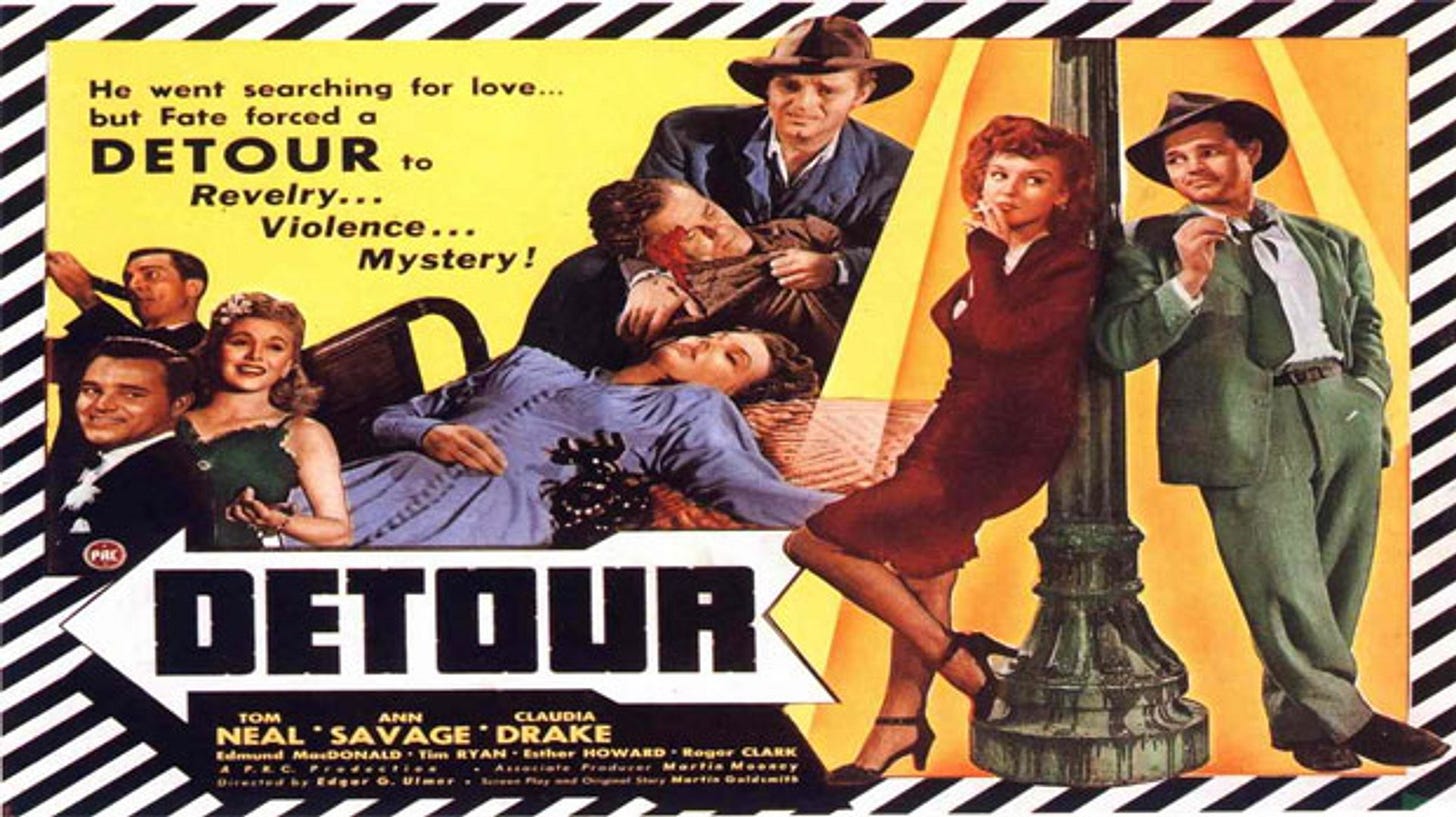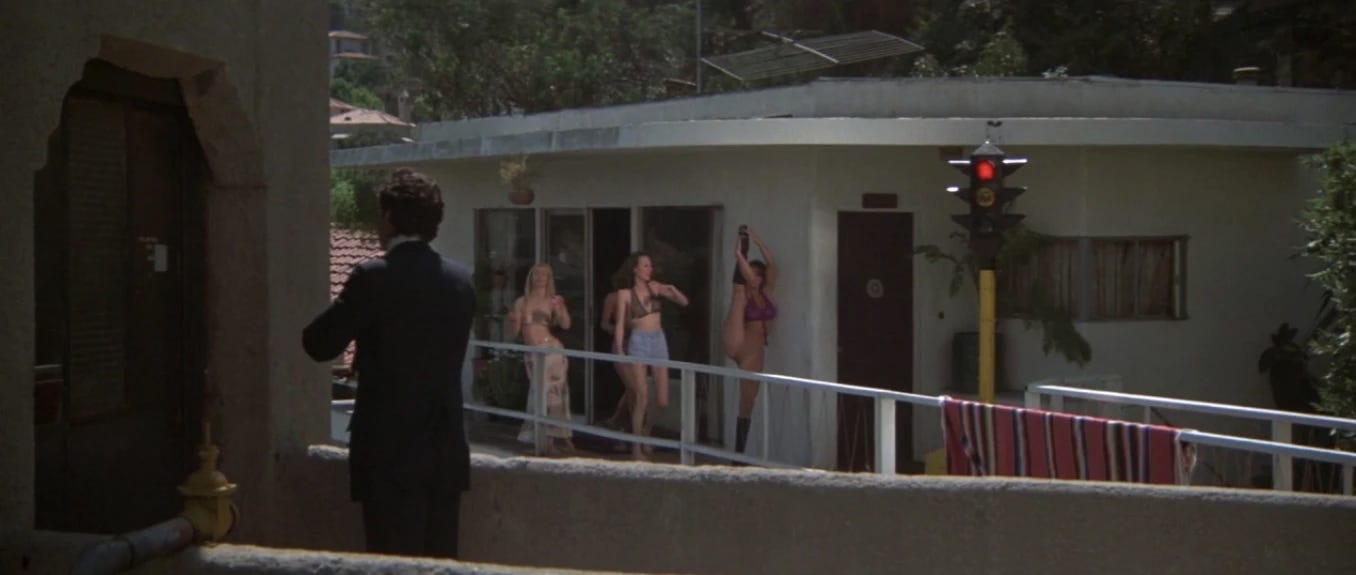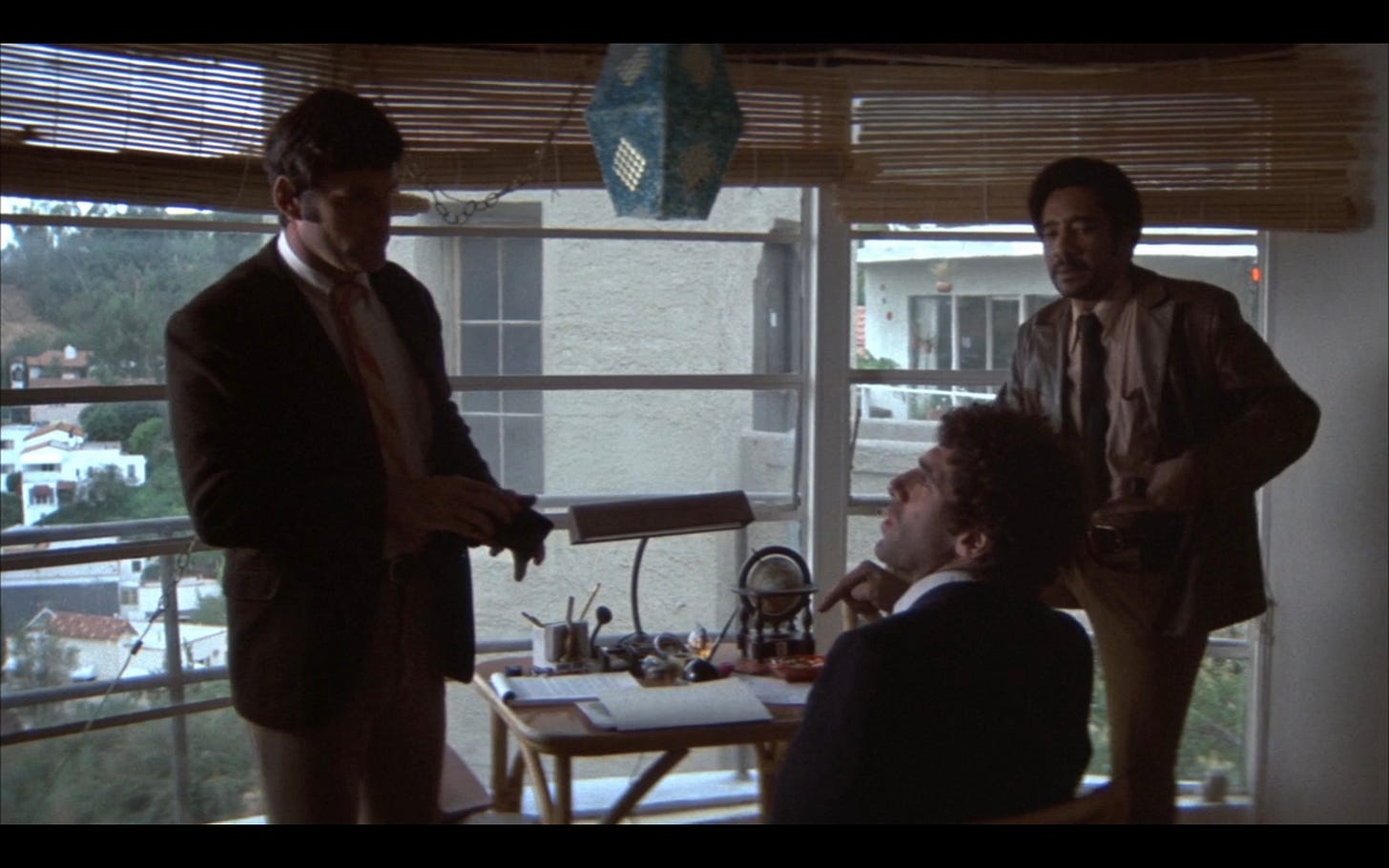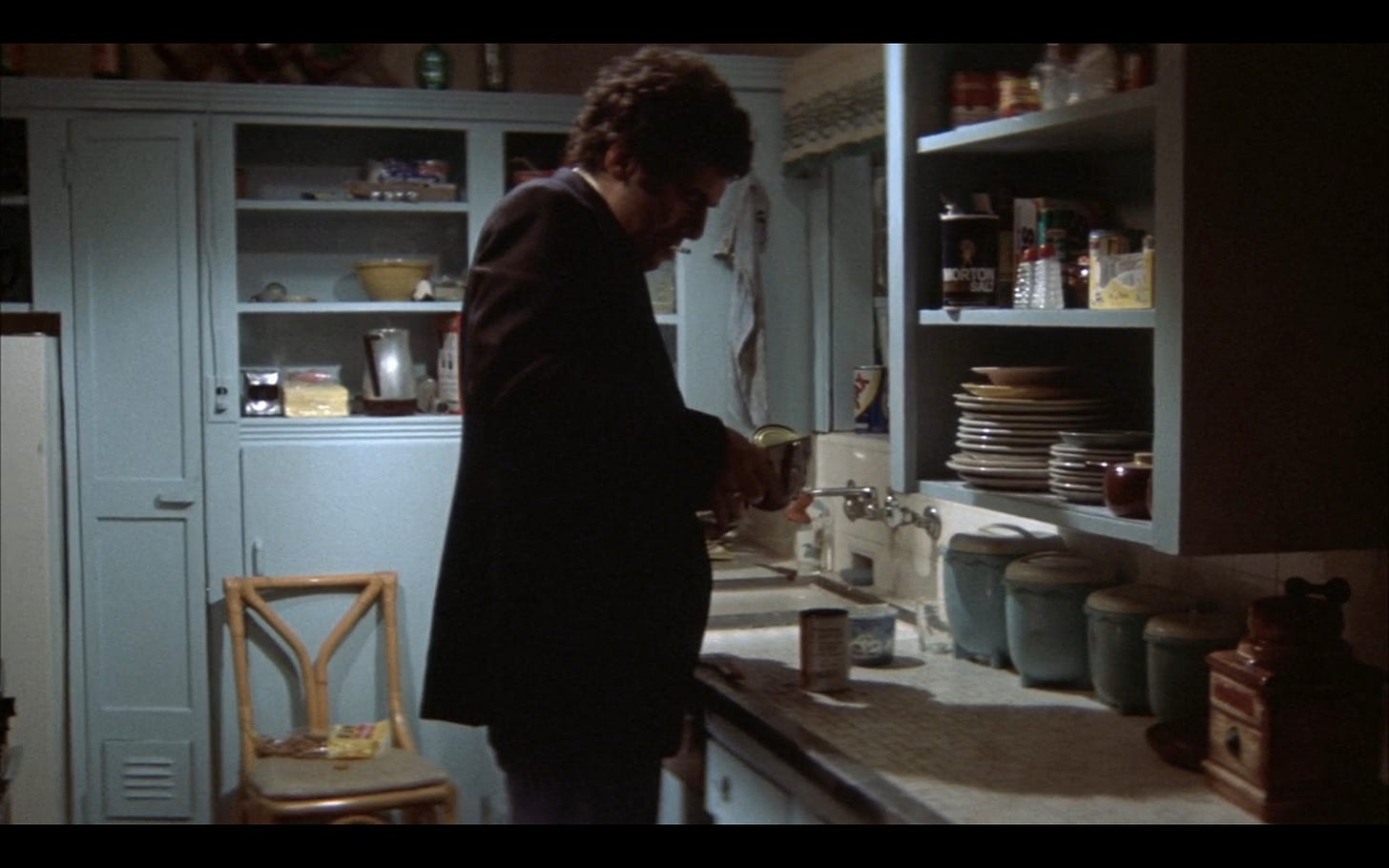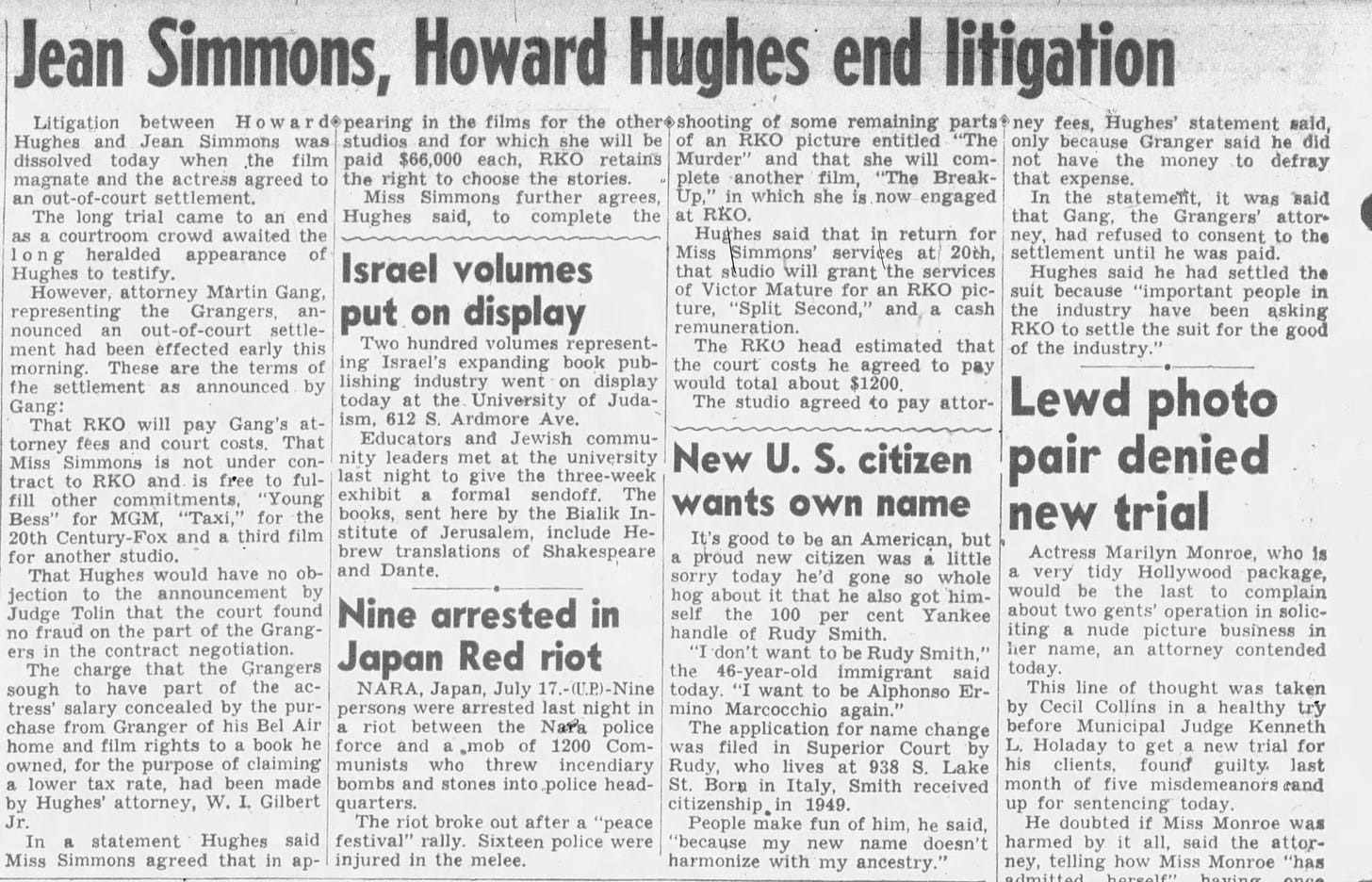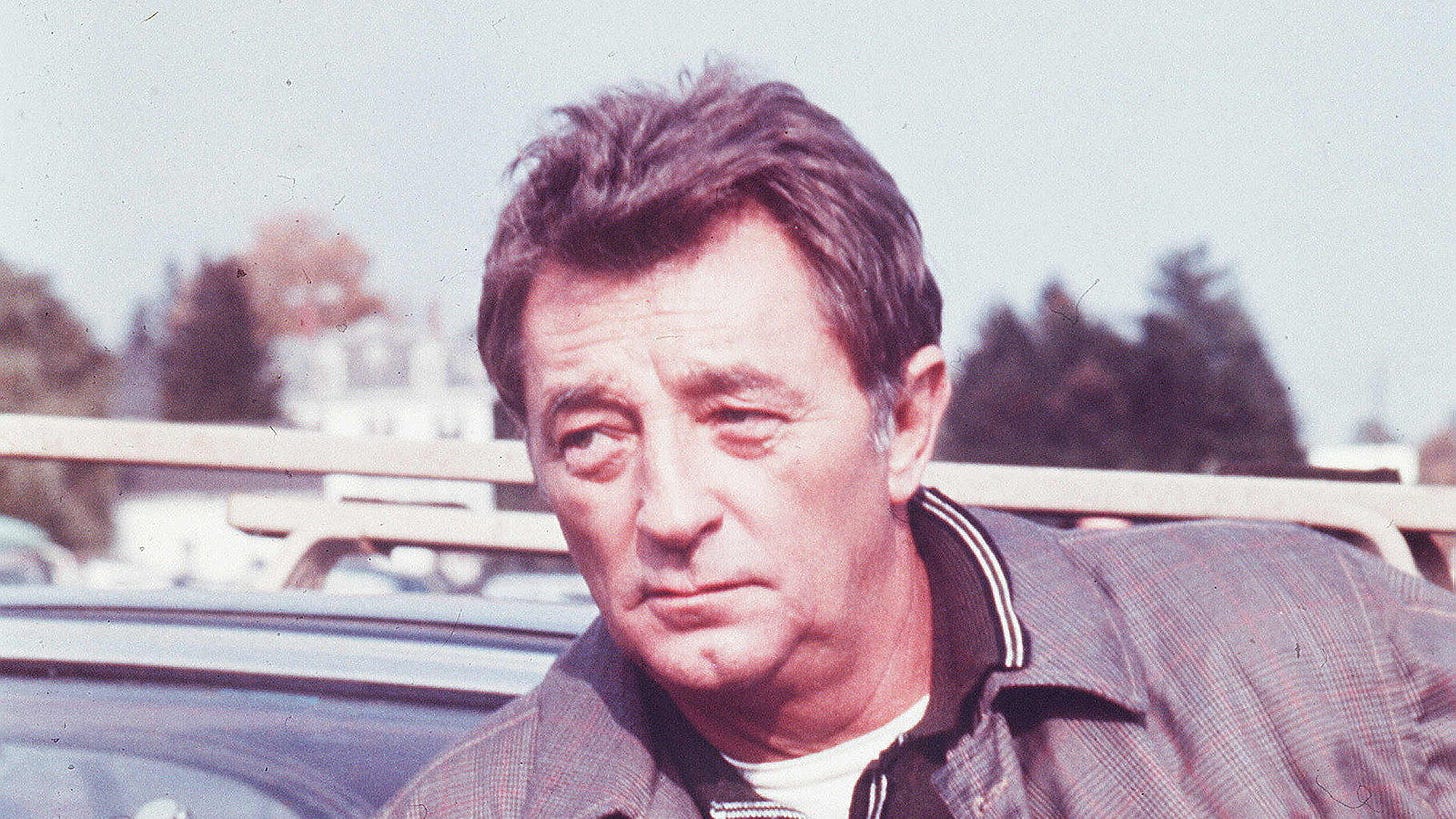The Screen Spectator: March 2023
DETOUR! The crazy, violent and tragic life of actor Tom Neal
One of the darker tales to emerge from the history of Tinsel Town is the story of Tom Neal, the ill-fated star of the classic film noir "Detour."
Born into a wealthy family in Evanston, Illinois, in 1914, Neal attended private school and Northwestern University before leaving school to pursue his passion for acting. Along the way, he also found success as an amateur boxer.
After an unsuccessful and unremarkable stint on Broadway, Neal headed west to Hollywood and made his screen debut in MGM's "Out West with the Hardys" in 1938. He landed his first major film role in the 1941 Republic Pictures serial "Jungle Girl."
He was often relegated to small supporting or uncredited roles at big studios like “The Pride of the Yankees” (1942) and “Air Force” (1943), or leading roles for poverty row studios like Republic, Monogram, and PRC, where the budgets were low and films were made quickly.
In 1945, he appeared in the B crime picture, "Detour," cementing his place in film noir history. Directed by Edgar G. Ulmer, the film tells the story of Al Roberts (Tom Neal), a down-on-his-luck musician hitchhiking from New York to California. Along the way, he picks up a hitchhiker named Vera (played by Ann Savage) and becomes embroiled in a web of blackmail and crime.
Despite its low budget and gritty atmosphere, "Detour" was an unexpected success and has since become a classic of the film noir genre. Neal coasted along with his career, never achieving the kind of success he dreamed of, but at least he was working.
His downfall began when he met rising starlet Barbara Payton at a Hollywood pool party. Despite Payton's engagement to actor Franchot Tone, Neal and Payton began an affair that would spark a love triangle culminating in a violent altercation on the night of April 3, 1951.
Neal, in a fit of rage and jealousy, attacked Tone in Payton’s front yard landing several brutal blows, leaving Tone with serious injuries. The former amateur boxer knocked Tone unconscious for 18 hours, and his injuries included a broken nose, multiple facial fractures, and a concussion.
The details of the fight were splashed across newspapers and magazines and the ensuing scandal proved to be the beginning of the end for Neal's less-than-remarkable career.
Following the assault, Barbara Payton and Franchot Tone tied the knot. The marriage was short-lived (I’m sure you are NOT surprised), as Payton resumed her affair with Neal just weeks after the wedding. Tone and Payton divorced within the year. Once reunited, Neal and Payton attempted to revive their careers by appearing together in the B film "The Great Jesse James Raid," but their personal drama, drinking and fighting overshadowed the production. Within the year, Neal walked out on Payton.
In 1965, Neal made headlines again when he called the police to report the murder of his wife, Gail. When the police arrived, they found Gail's body with a bullet wound to the back of her head. Neal was immediately taken into custody and later charged with murder
During the trial, Neal's defense team argued that he had killed his wife in self-defense after she attacked him with a gun. However, the prosecution painted Neal as a jealous and violent husband with a history of abusing his wife. After a highly publicized trial, Tom Neal was found guilty of involuntary manslaughter and sentenced to ten years in prison. He served six years before being released on parole in 1971.
On August 7, 1972, Tom Neal was found dead in his bed from heart failure.
MARLOWE’S PAD: The Long Goodbye’s Iconic Apartment
The Los Angeles apartment, famously depicted as the home of the iconic private detective Philip Marlowe in the classic film "The Long Goodbye,"(1973) is nestled in the exclusive Hollywood Hills neighborhood.
Designed by architect Carl Maston and built in 1956, the apartment forms a part of a mid-century modern complex that exudes the distinct architectural style of the era. The one bedroom unit that featured in the film has undergone renovations but still retains the essence of Marlowe’s pad.
That fantastic elevator that carries Marlowe up to his unit, named the High Tower, was constructed in 1929 and designed by architect Carl Kaye in the campanile style. Built for homeowners who lived on the hillside, the passenger carriage travels through a shaft in the middle of the tower, offering the residents a convenient and scenic way to access their units.
Over the years, the elevator tower has become an iconic and recognizable landmark in Los Angeles. It is also listed on the National Register of Historic Places, a testament to its enduring legacy and cultural significance.
Upcoming DVD/BLURAY Releases
The Criterion Collection MILDRED PIERCE (1947)
4K UHD + BLU-RAY SPECIAL EDITION FEATURES
Starring Joan Crawford in one of her most iconic roles, "Mildred Pierce" is a masterpiece of film noir that explores themes of ambition, betrayal, and motherhood in a gripping and unforgettable way.
In addition to the impressive 4k remaster, the Criterion release of "Mildred Pierce" also includes a wealth of bonus features and special content, such as interviews with film scholars and experts, audio commentary from renowned critics, and archival materials that offer a glimpse into the making of this classic film.
4K digital transfer, with uncompressed monaural soundtrack
One 4K UHD disc of the film presented in HDR and one Blu-ray with the film and special features
Conversation with critics Molly Haskell and Robert Polito
Excerpt from a 1970 episode of The David Frost Show featuring actor Joan Crawford
Joan Crawford: The Ultimate Movie Star, a 2002 feature-length documentary
Q&A with actor Ann Blyth from 2006, presented by filmmaker Marc Huestis and conducted by film historian Eddie Muller
Segment from a 1969 episode of the Today show featuring Mildred Pierce novelist James M. Cain
Trailer
English subtitles for the deaf and hard of hearing
PLUS: An essay by critic Imogen Sara Smith
A Follow up to the ANGEL FACE/RKO drama
This 1952 article details some of the drama going on at RKO over Jean Simmons’ contract dispute and the settlement reached between Simmons and Howard Hughes.
The terms of the settlement include the completion of three more films including one called “Murder.” That film would later be renamed “Angel Face.”
It’s very interesting to see Hughes’ reason for settling the case, “important people in the industry have been asking RKO to settle the suit for the good of the industry.” I wonder who sat down and had a talk with Mr. Hughes.
(Also, check out that bit of article about Marilyn Monroe.)
THE BEST OF FEBRUARY: Some of the best of what I watched, read and listened to last month. . .
FILM
BENEDICTION (2021) directed by Terence Davies. Starring Jack Lowden, Peter Capaldi
The work of English director Terence Davies is criminally underrated. His film "Distant Voices, Still Lives" is one of the most heartbreaking and beautiful films I've ever seen. It has a permanent spot as one of my top ten favorite films.
The hallmarks of Davies' direction include a strong sense of visual composition and framing, striking imagery that emphasizes the beauty and melancholy of the human experience. He is also an expert at using music to heighten the emotional impact of his films, and his soundtracks are often carefully curated to evoke an authentic feel of the past.
"Benediction" is a biographical drama film that explores the life and career of English poet, soldier, and anti-war activist Siegfried Sassoon.
Told with quiet thoughtfulness and non-linear storytelling, the film follows Sassoon's experiences during World War I, his struggles with PTSD, and his journey towards becoming a vocal opponent of the war. Along the way, Sassoon forms close relationships with fellow writers and poets such as Robert Graves and Wilfred Owen. While some might consider this one too slow, "Benediction" offers a poignant and thought-provoking look at the impact of war on individuals and society as a whole.
Heaven’s Gate (1980)
When "Heaven's Gate" premiered in 1980, it was slammed by critics as being one of the worst films ever made. They declared it terrible, awful, and unwatchable. The film bankrupted its studio and marked the end of the era of director-driven films. Despite all of this, I decided to watch the three and a half hour restored director's cut of the film. As I watched, I felt like I was witnessing something truly special and born out of the uncompromising vision of its director, Michael Cimino.
The film is a western tale that explicitly criticizes capitalism, exposes xenophobia, and dismantles the myth of righteous American westward expansion. It is hard for me to reconcile the critics' view of the film with the one I saw. Even if they had not seen this particular cut of the film, I am sure what they did see was not in any way close to the "worst film ever made."
When the credits rolled after three plus hours, I was left with the same feeling I had after watching Malick's "The New World" - the feeling that I had seen something singular, something beautiful, a masterpiece.
ARTICLES
Hidden Star: Richard Widmark
Film Comment May-June 2001
“He played con men and pickpockets, gold hunters and psychiatrists, sea captains and rodeo riders. He was one of the most dependable actors Hollywood ever had and also one of the best. Kent Jones goes to lunch with Richard Widmark and talks with him about his old job.” (you find the article here)
The Last Celluloid Desperado
My video on “The Friends of Eddie Coyle” got some extra traffic this week so I decided to revisit this interview with Robert Mitchum on the set of the film featured in the March 1973 issued of “Rolling Stone.”
If you are a Robert Mitchum fan this is a must read.
RADIO
Screen Directors Playhouse: Lifeboat
The "Screen Directors Playhouse" series first aired this radio play in November 1950. The play features Tallulah Bankhead as reporter Constance Tower, the role she played in the original 1944 film. Jeff Chandler co-stars as Kovac, the character originally played by John Hodiak. The director, Alfred Hitchcock, provides an introductory narration.
YOUTUBE
Hollywood: A Celebration of the American Silent Film - Episode 5: Hazards of the Game
The fifth episode of "Hollywood: A Celebration of the American Silent Film,"(1980) entitled "Hazards of the Game," focusses on the mostly forgotten work of silent film era stuntmen. This episode details dangers and the insane risks involved in early filmmaking, particularly in the making of action and adventure films. The episodes includes interviews with the stars and stuntmen who were there, along with a tragic story of love and loss told by silent film star Viola Dana.






